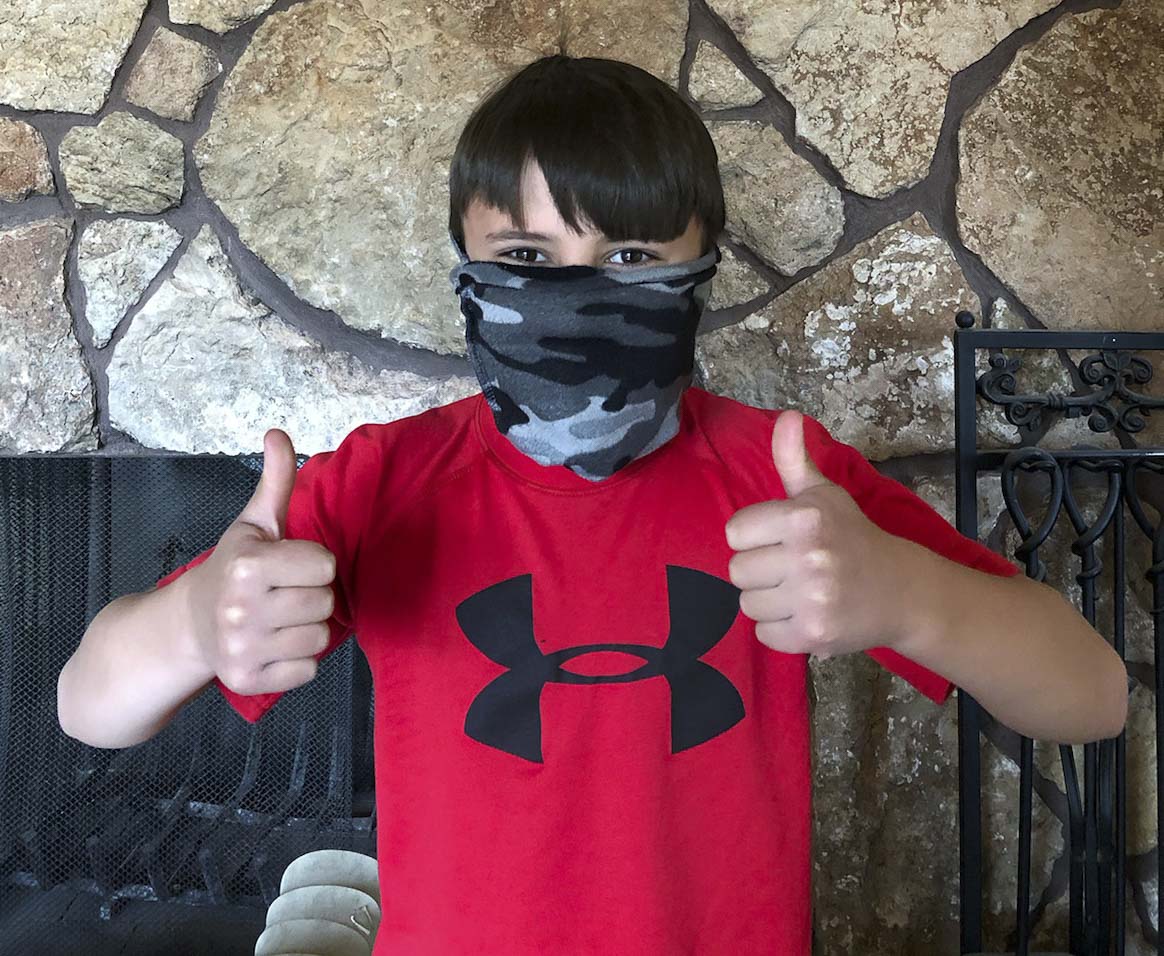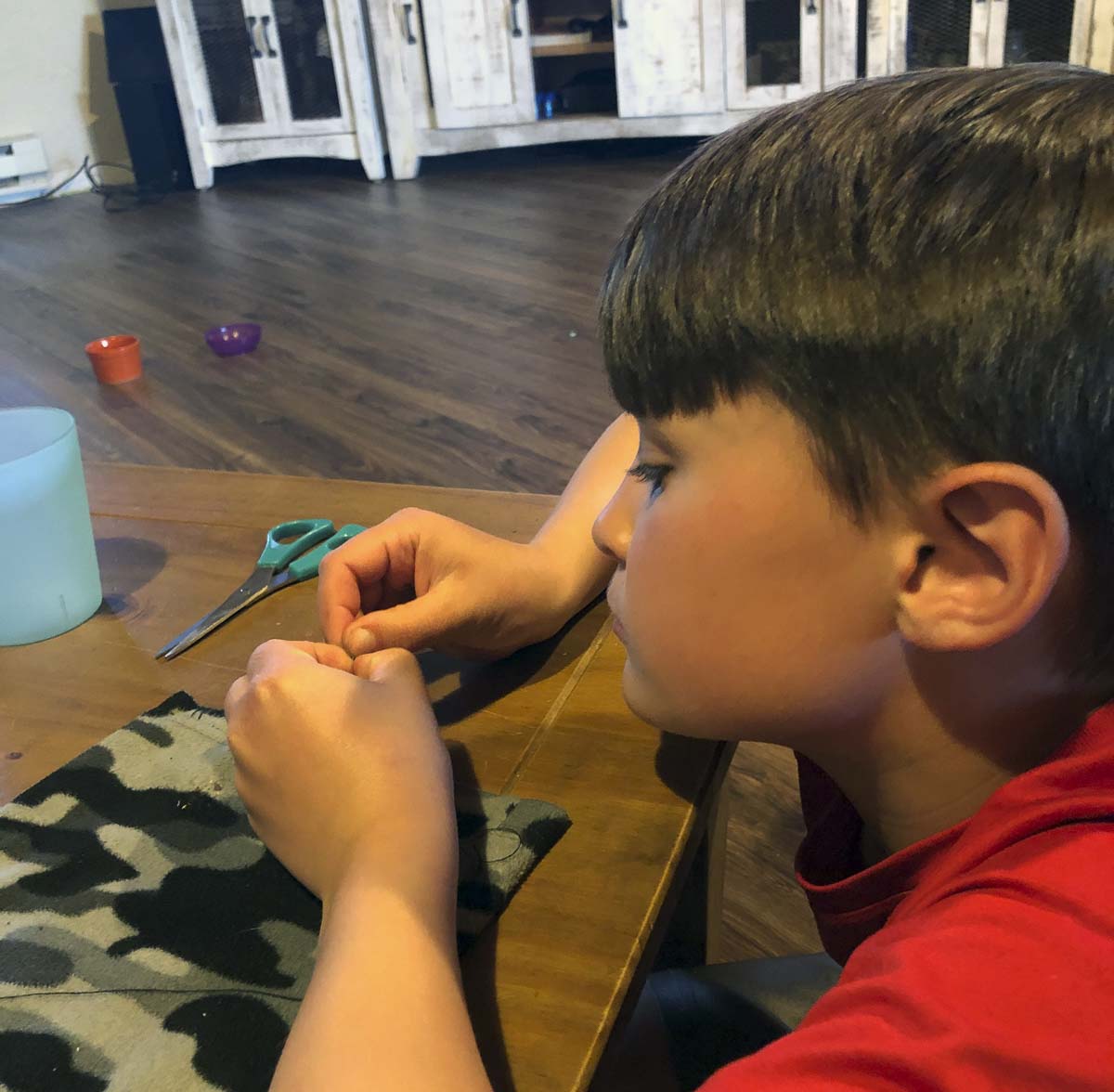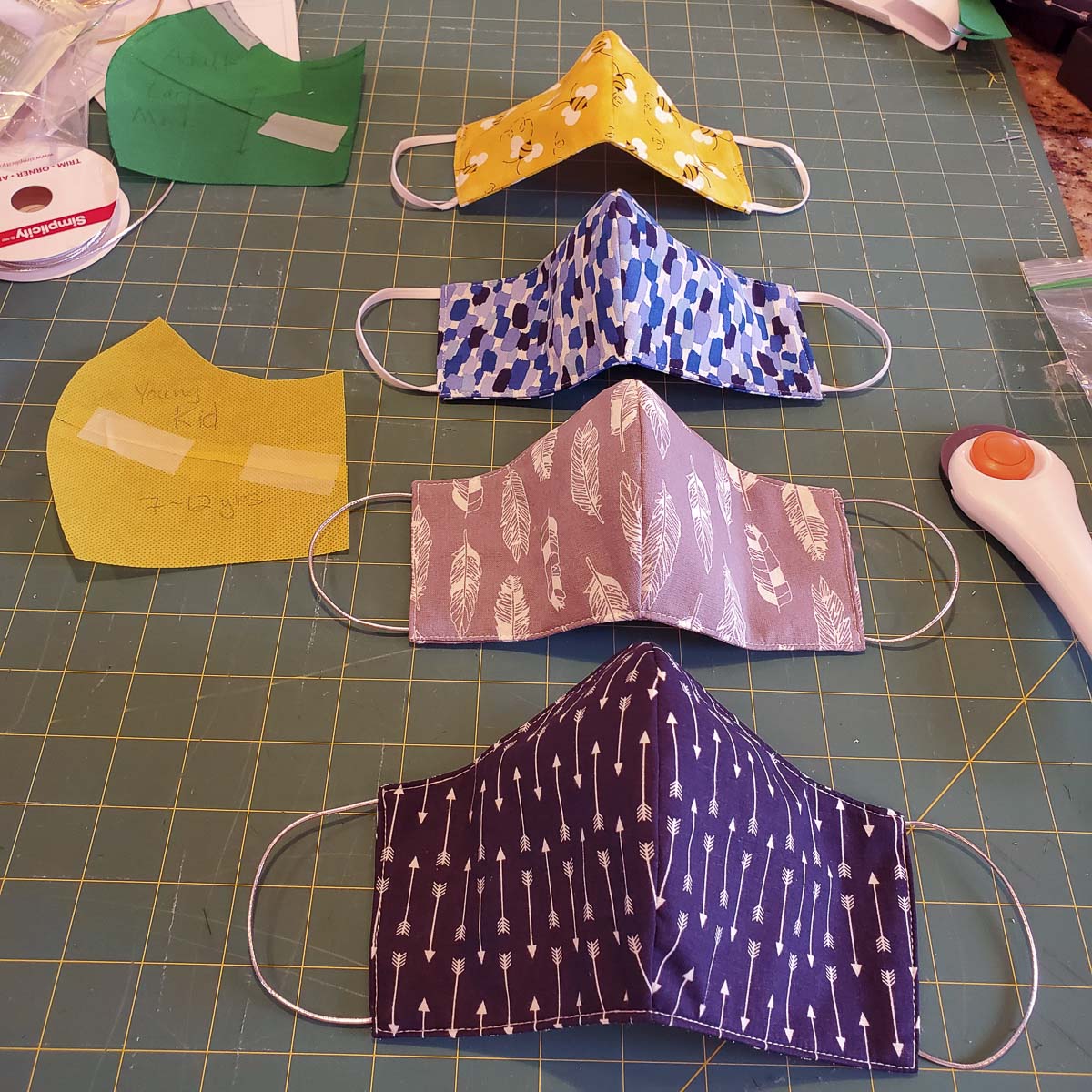Since the statewide school closure, Logan Gnade took the skills he learned in class to the next level by designing and cutting out a pattern to sew facemasks from an old pair of pajamas
WOODLAND — Logan Gnade, a fourth-grade student at North Fork Elementary School, uses mathematics combined with sewing skills he learned from his teacher Patti Cutler to make face masks at home.

Since the statewide school closure, Logan took the skills he learned in class to the next level by designing and cutting out a pattern to sew facemasks from an old pair of pajamas. In addition to more-advanced sewing skills, Logan used math he learned at school to make the proper calculations to ensure his face masks would fit his friends and family properly.
“He calculated a quarter-inch seam allowance where needed throughout the pattern, spaced out uniform stitches a quarter-inch-apart, and made all the necessary adjustments to ensure his pattern would work,” explained Cutler. “He was also careful to observe the safety skills I teach in class to prevent any injuries from sewing needles which include keeping needles in fabric when putting down a project.”
Patti uses her background working as an apparel patternmaker for Nike to develop projects and teach her students life skills. “Sewing is a great way to practice practical mathematics skills including measurement and fractions,” said Cutler. “In addition, sewing improves hand-eye coordination, increases dexterity, relieves stress, and improves focus and patience.”

Since the school closure started in March, Cutler and the rest of her fourth-grade team develop home-learning lessons for their students centered around core subjects each week.
“We want to keep our students engaged with learning by encouraging them to participate in a variety of activities that don’t involve screen-time, too much of which can cause eye strain and exhaustion,” she said. “Our team creates and designs projects to help students meet standards using step-by-step directions with kid-friendly language.”
In addition to sewing projects, teachers create activities including scavenger hunts, skip-counting while exercising, finding math problems in everyday life such measuring ingredients while cooking, going outside to plant a garden, or creating arts and crafts.
“We also make fun videos for our students including teachers reading-aloud, demonstrating a variety of projects, or teaching strategies for growth,” said Cutler.
To help reduce the emotional impact from the school closure and Stay-at-Home order, Woodland’s teachers also hold class meetings using Google Classroom’s Meets application.
“Students stay connected with their friends and continue to feel the bond of our classroom community,” said Cutler. “In addition, sharing the projects they’re working on encourages their classmates to try new ideas.”

Transitioning in-class learning to remote home-based projects presents incredible challenges for all of Woodland’s teachers.
“None of us expected to teach online for the remainder of the school year but maintaining a positive attitude and a flexible mindset has been key to making the online transition as smooth as possible,” said Cutler. “Woodland’s technology experts have been amazing to help navigate the pitfalls of making the quick jump to online learning; they have been working feverishly to help make technology accessible to our families and to make it as easy as possible for parents to become our learning partners with their children.”
Whether learning in-class or remotely, Cutler emphasizes the importance of adding variety to how students learn.
“Core subject learning is important, however practical hands-on projects provide invaluable lessons about community, family, civic responsibility, and social health,” she said. “These central components of human life can also be woven into the curriculum we teach our students.”
Learn more about how Woodland Public Schools keep students learning at: https://www.woodlandschools.org/home-learning-stories
Information provided by Woodland Public Schools.
More coverage:
COVID-19 Information and links





